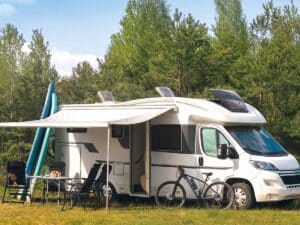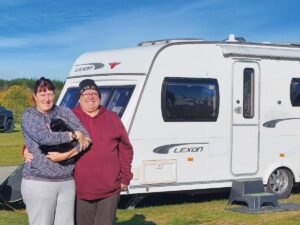In 28 years of RV ownership, finding desirable vehicles and making them ours has almost been as big an adventure as being on the road, says MCD writer Jill Malcolm.
My addiction to RV travel began in 1969, when my then husband and I bought a Type 2, T1 Volkswagen Kombi van to embark on an African expedition. It was an early model, shaped like a shoebox and known as a ‘Splittie’ because the windscreen was divided in two. After exploring that extraordinary continent for two years, the seeds of motorhome travel were firmly embedded, yet I didn’t set foot in an RV again for another 25 years.
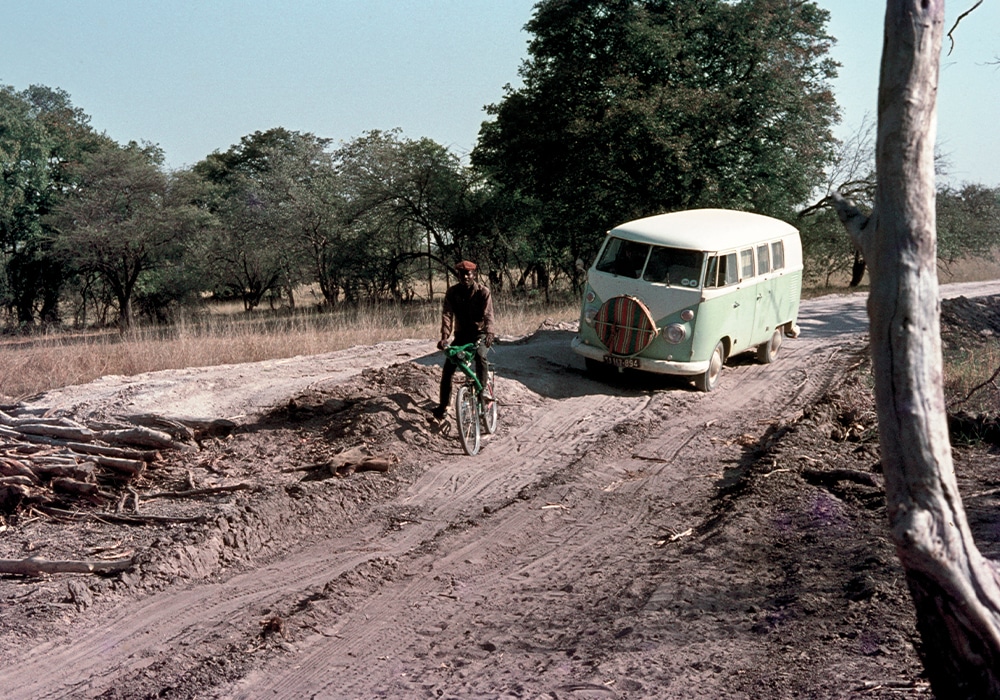
In the mid-1990s, Bill and I contemplated the idea of living on the road. At first we rolled the idea around lightheartedly, but gradually we started saying ‘when we’ instead ‘if we were to’; ‘we must’ instead of ‘maybe we could’. In our late fifties, we threw everything up in the air, bought a caravan, rented the house, and headed off around New Zealand. In those days the very word ‘nomad’ still held a whiff of the impoverished and disreputable. Quite a few of our friends thought we were, well… odd.
Keeping it simple
The 1970s Anglo Astral caravan was 5.5 metres long and cost $10,000. Shaped like a loaf of bread and faded by time, it was not a thing of great beauty but it was within our budget. We already owned the Nissan Safari to tow it. The caravan’s facilities were rudimentary. It had no insulation, water tanks or toilet, one small sink and a two-burner cooker. For 18 months, we toured with this unbecoming caravan, staying in campgrounds and having a marvellous time. The bug had bitten. To finance this lifestyle, Bill worked in vineyards and painted houses. I cleaned houses, and penned a book.

Catching the bus
Before the emissions laws came into force, converted buses were a very popular form of RVing in New Zealand. We’d examined many of these as we travelled, and Bill wanted to challenge his new knowledge by fitting out one himself. In 2002, we sold the caravan for a thousand dollars more than we paid for it, and bought a second hand, narrow-body Rainbow Hino from Japan. It came complete with two umbrellas, a bar of chocolate and a cloth hat. The fit-out took a year and involved a large committee of other DIYers undertaking the same exercise. The end result was one of the best RVs we have owned. It was roomy and comfortable, functionally convenient and aesthetically pleasing. We headed off again, keeping solvent in the way we had before – but only just. Three years later, we sold the Hino when we left New Zealand to work overseas, and on our return a year later, the ‘DIY bus’ age was well on the way out. When EU (Euro 1) emission standards were adopted here in 1997, the importation of second-hand buses was no longer feasible; commercially built motorhomes had begun to dominate the market.

When less is not more
In 2006, we bought a Fiat Ducato previously used as a carpet delivery van. Again, Bill’s fitout was masterful. We had a few weekends away before crossing Cook Strait to spend time in the South Island. It didn’t go well. It didn’t take long to discover that the vehicle was too small for long excursions. It was not conducive to matrimonial harmony, and arguing in a space you can’t swing a cat is not easy. To add to the misadventure, the Fiat’s motor also let us down several times, in places that were difficult to access. It cost us a fortune in towage fees. We became disillusioned and grumpy about the choice we had made.
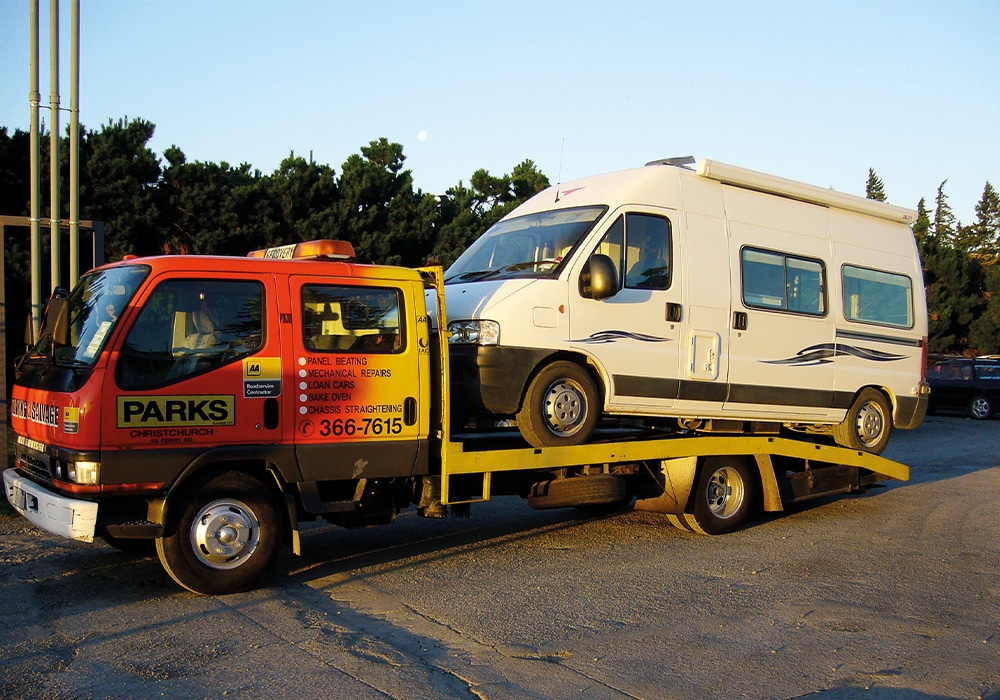
Going up
The experience with the Fiat put paid to Bill’s DIY interests and in 2008, we bought a second-hand, Australian-made Jayco Conquest Motorhome, 7.1 metres long and built on a Ford Transit. Its spacious interior had a popular layout, with a large, rear, U-shaped lounge that made up into single or double beds, and an expansive Luton for storing large items. It was an excellent touring vehicle and we enjoyed it for six years, before deciding to part with it. Letting it go was like leaving home. There were so many memories tied up in that vehicle and nearly all of them were good. I had a short period of mourning – which ended with our next purchase.
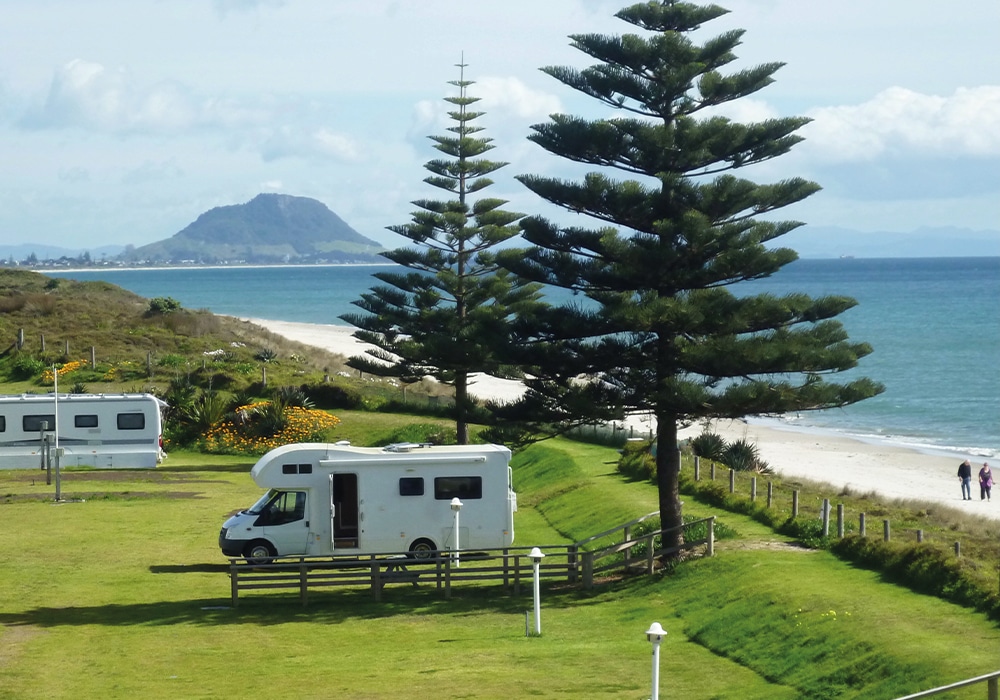
Getting hooked
In 2014, we decided in the interests of economy that we would buy a caravan. Some RV friends thought we had seen the light, others that we’d gone to the dark side. We intended to travel differently, setting up for longer periods and exploring by car. After much research, (by now we were picky), we decided on a Geist caravan 535 LV, 2005, which was spacious and comfortable and had exactly the layout and features we were looking for. The downside was that it was in England and we weren’t. Importing an RV on your own is not for people of a nervous disposition. A caravan industry friend in England gave the Geist a clean bill of health and happily it was still in good shape when it was delivered to New Zealand two months later. The sea change to caravanning was a success. We pulled it with our front-wheel-drive VW Passat, which coped in most situations, and kept it for five years. But even with motor-movers, the hassle of getting it on the road was off putting for short excursions. We weren’t using it enough and decided it was time for another change.
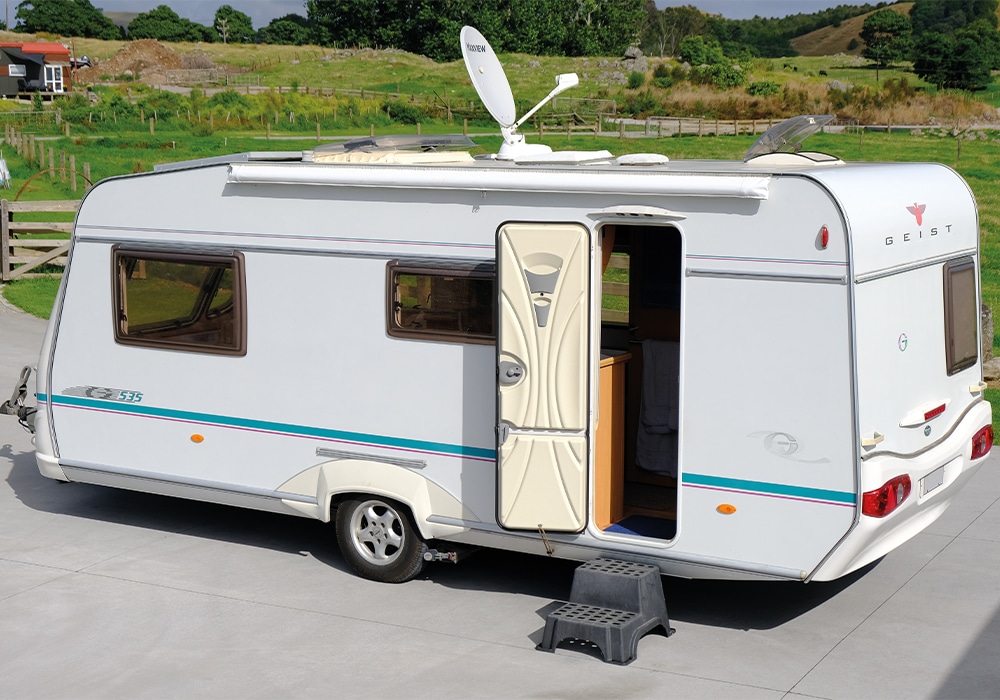
Easy on the road
We’d always liked Whakatāne-built Coastal motorhomes but never had the cash to buy one. However, early in 2021, we came across an early model, 2003, 6.7m long, with only 160,000km on the clock. Although it lacked the chic interiors of more modern ones, it had good bones, the layout ticked most boxes. There were compromises, but none we couldn’t live with. Its idiosyncrasies were manageable and we congratulated ourselves on our good choice. Six months later, it came to pass that some idiosyncrasies of our own, combined with some unfortunate timing, brought this tenure to an end. We ended up waving goodbye to the Coastal as it left on the back of a tow truck. Well-meaning friends began muttering that the universe was trying to tell us something. “You’re not so young any more” – as if we didn’t know. But they didn’t get it; we’re addicted.
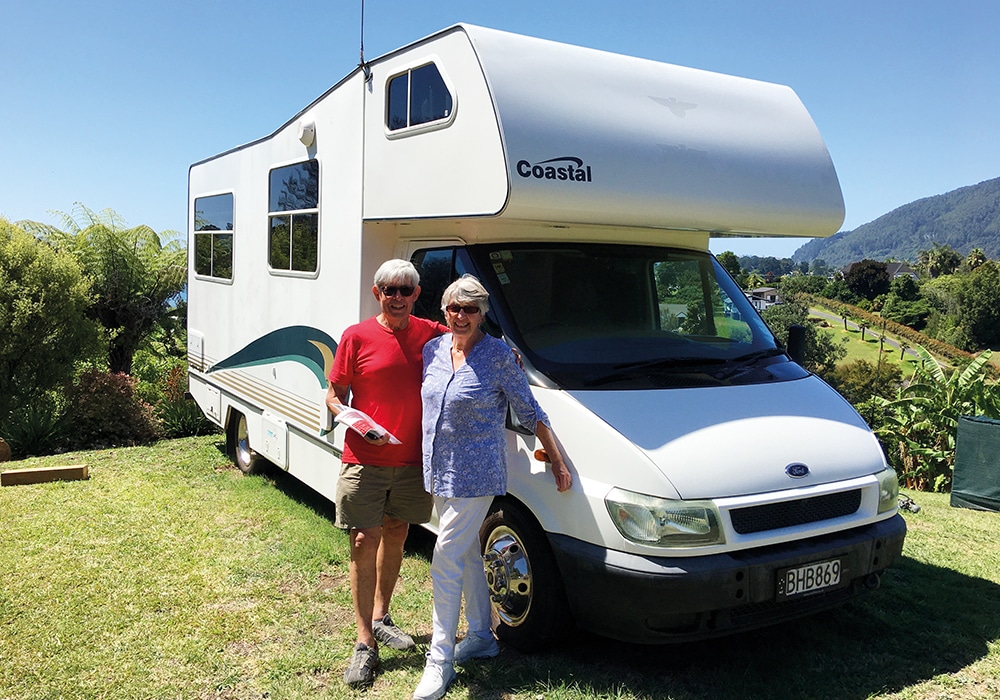
Seeing the light
The hunt was on again. We looked for something that would replicate the Coastal. But while we were nosing around the RV Super Centre, Bill pointed out a Nomad van. “Why don’t we have quick gander?” “Not interested,” I said. “Last van was a disaster.” An hour later we put down a deposit on an ex-rental, 700M Kea Nomad on Mercedes Sprinter, 2016 – a practical, no-frills, comfortable van conversion. We added another solar panel, a lithium battery and an awning. Although space and storage were diminished and the bathroom ridiculously small, we easily adapted. It was immaculately presented and follow-up from the RV Super Centre has been exemplary. I think the van’s best feature is the spacious windows and the constant connection to the environment. It’s a keeper. Eight RVs in one lifetime is enough and the Nomad is perfect for our needs.
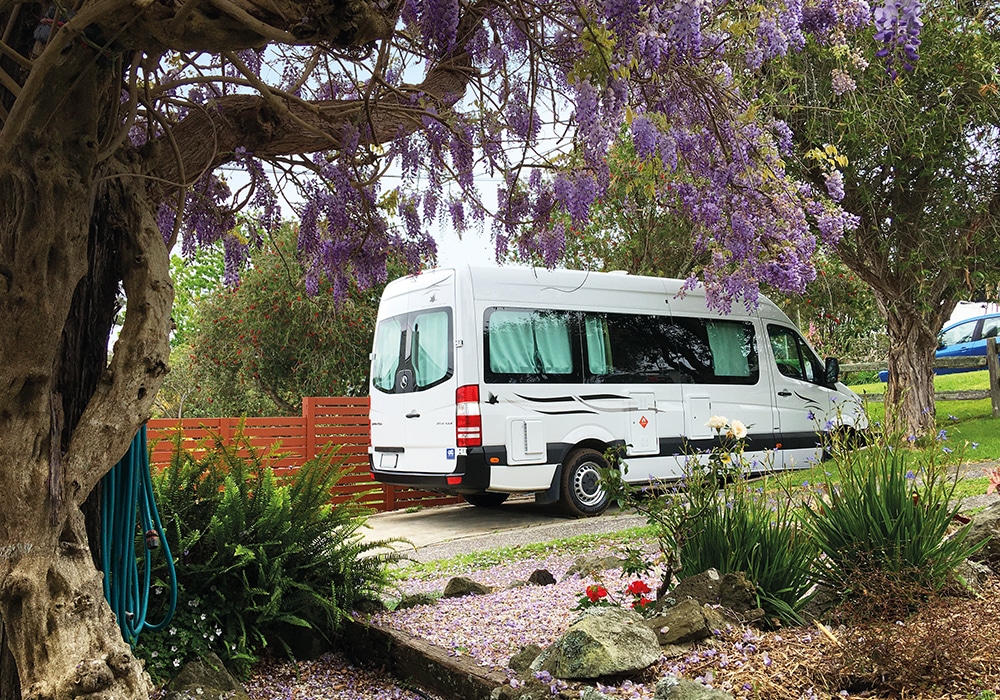
Jill & Bill’s RV lessons
• Consider how you plan to use the RV before buying.
• There will always be some compromises.
• Work out what you need and what you can do without.
• Size isn’t everything – check the design and layout for space and storage.
• Choose the right caravan weight for the capability of the tow vehicle.
• Ensure caravan & car compatibility: electrics plugs, tow ball size etc.
• Add roadside assistance to insurance.
• Ease of access to at-home parking influences how often the RV is used.
• The larger the fridge the better.
• Make sure the bed arrangement fits your comfort needs.
• Ensure adequate battery capacity and power source.
• Check ease of access through the home door.
Jill’s top travel tips
• Make a pre-departure and packdown checklist.
• Never pass a dump station without using it.
• Try to park up before 4pm.
• Park facing the entrance in case there is a need for a quick getaway.




